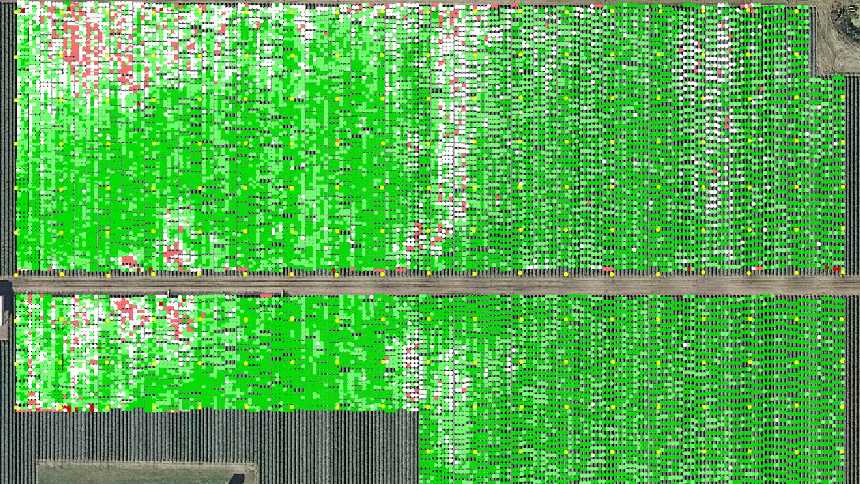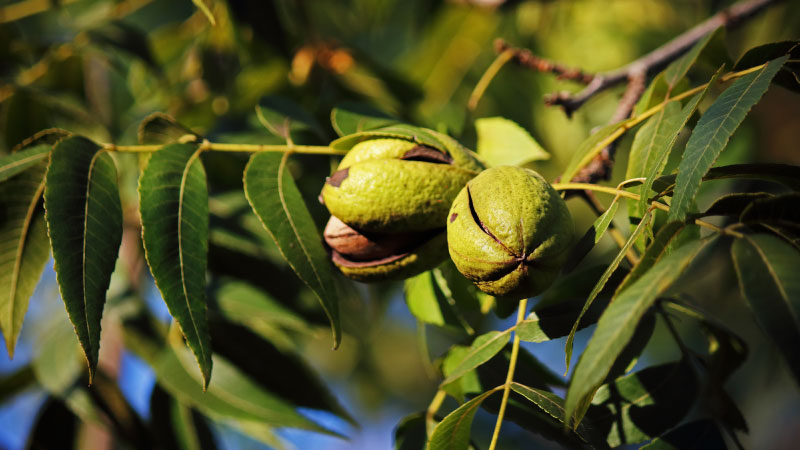Maximizing Nematode Management In Vegetables
Joe Noling, a professor and nematologist with UF/IFAS, says growers should consider the end of a crop season the beginning of managing nematodes for the next.
“I am fond of telling growers that when the cropping season is over it is not the time to abandon the field or forget about integrated nematode and crop management practices,” he says. “Growers farming nematode-infested land must be reminded to implement rapid destruction of their fruit or vegetable crop so as to withdraw further nourishment from a reproducing and increasing population of nematodes in the soil.”
Soil populations, which are allowed to build to high levels after final harvest, will be much more difficult to manage later. Growers need to remember that most nematodes are pretty much confined within the beds (i.e., 50% to 62% of the field), rather than all over after the plastic is removed and the field is disked.

This infrared imagery shows where no spring crop termination fumigation occurred in a strawberry field trial. The white and red stunted areas indicate plant stress brought on by nematode pressure.
Photo by UF/IFAS
Bottoms Up
For crop termination, Noling recommends a bottom-up approach with a drip applied fumigant versus a top-down approach with a herbicide or foliar defoliant.
“Over the years, we have demonstrated the value of chemical crop termination treatments with rates per treated acre of Telone EC (10 to 12 gallons/acre), Vapam (75 gallons/acre); or K-Pam (60 gallons/acre),” he says. “These fumigant treatments not only kill the plant and its root system, but also many of the nematodes confined within the soil composing the plant bed. This is the time to take advantage of a vulnerable moment when nematodes are confined to the bed to reduce the population.”
Even with a single tape per bed, benefits from long injections of crop termination chemicals for nematode management have been expressed in improved health, vigor, size, and yield of the following season’s fruit or vegetable crop.
Know The Limits
After noting benefits, Noling adds: “I am also very quick to point out to growers some of the requirements and limitations of the crop termination approach for nematode management. Toxicologically, fumigant concentrations of Telone EC in irrigation water must exceed 500 parts per million (ppm) to effectively and consistently kill nematodes.
Because of inconsistencies observed, current recommendations for concentrations of the active ingredients of Vapam or K-Pam in irrigation water is 1,500 ppm or higher. It also is not the time to pump the fumigant into the irrigation system as fast as possible.”
In summary, Noling says one of the founding principles of an integrated nematode management strategy is to ensure early destruction of the crop immediately after final harvest. Any delay in crop termination can increase soil populations of nematodes, particularly in the span of a few weeks after final harvest, if the plant and its roots are not killed immediately. In general, the more nematodes left in the soil after a crop, the more will survive to infect roots of the following crop.
“Early crop destruction is one of many integrated strategies, both chemical and nonchemical, which growers must consider and use to incrementally manage nematode populations within their fields,” Noling says.
5 Tips To Consider
Joe Noling says remember these five factors for crop termination.
1. Monitor and identify pest problems occurring during crop growth.
2. Once nematodes have been identified as the causal agent for the problem in the field, begin planning the implementation of rapid crop destruction in the field.
3. For seep irrigated fields, this may effectively translate to use of a foliar-applied herbicide or defoliant, followed by plastic removal and disking of field soil to expose nematodes to the heat and drying action of the sun.
4. For crop termination, a bottom-up approach with a drip-applied fumigant is preferred to a top-down approach with a herbicide or foliar defoliant.
5. The advantage of crop termination with a fumigant treatment is that it not only kills the plant and its root system, but also many of the nematodes confined within fumigant treated zone of soil composing the plant bed.
This article is sponsored by Telone.









